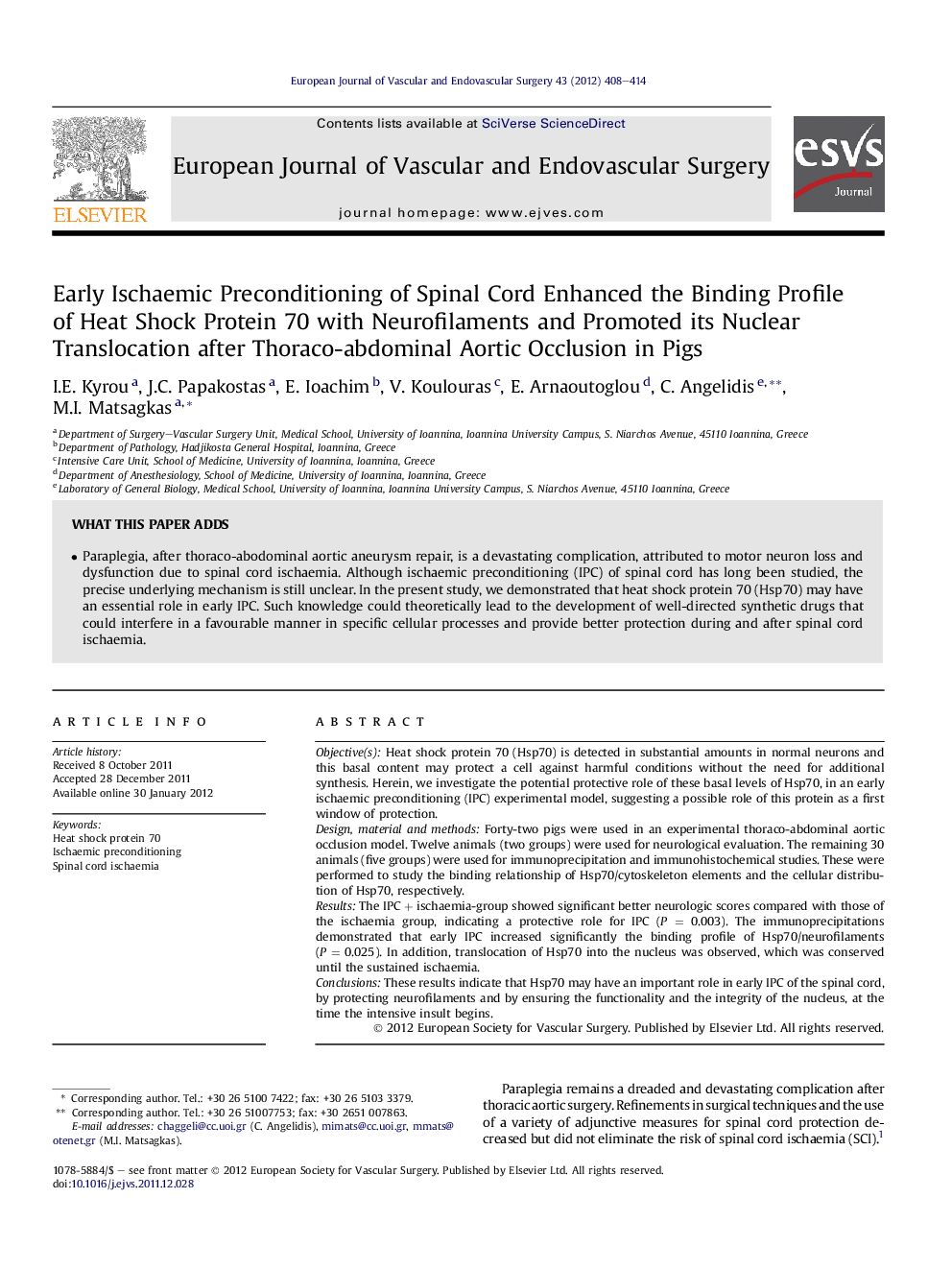| Article ID | Journal | Published Year | Pages | File Type |
|---|---|---|---|---|
| 2912151 | European Journal of Vascular and Endovascular Surgery | 2012 | 7 Pages |
Objective(s)Heat shock protein 70 (Hsp70) is detected in substantial amounts in normal neurons and this basal content may protect a cell against harmful conditions without the need for additional synthesis. Herein, we investigate the potential protective role of these basal levels of Hsp70, in an early ischaemic preconditioning (IPC) experimental model, suggesting a possible role of this protein as a first window of protection.Design, material and methodsForty-two pigs were used in an experimental thoraco-abdominal aortic occlusion model. Twelve animals (two groups) were used for neurological evaluation. The remaining 30 animals (five groups) were used for immunoprecipitation and immunohistochemical studies. These were performed to study the binding relationship of Hsp70/cytoskeleton elements and the cellular distribution of Hsp70, respectively.ResultsThe IPC + ischaemia-group showed significant better neurologic scores compared with those of the ischaemia group, indicating a protective role for IPC (P = 0.003). The immunoprecipitations demonstrated that early IPC increased significantly the binding profile of Hsp70/neurofilaments (P = 0.025). In addition, translocation of Hsp70 into the nucleus was observed, which was conserved until the sustained ischaemia.ConclusionsThese results indicate that Hsp70 may have an important role in early IPC of the spinal cord, by protecting neurofilaments and by ensuring the functionality and the integrity of the nucleus, at the time the intensive insult begins.
